NEW
When was Calanais I
utilised for its
possible celestial directions?
| Setup |
Calanais I without explicit
rows |
Calanais I with only begin
and end stone of each row |
Calanais I with begin, middle
and end stone of each row |
Calanais I with all stones of
each row |
| Map of
setup |
 |
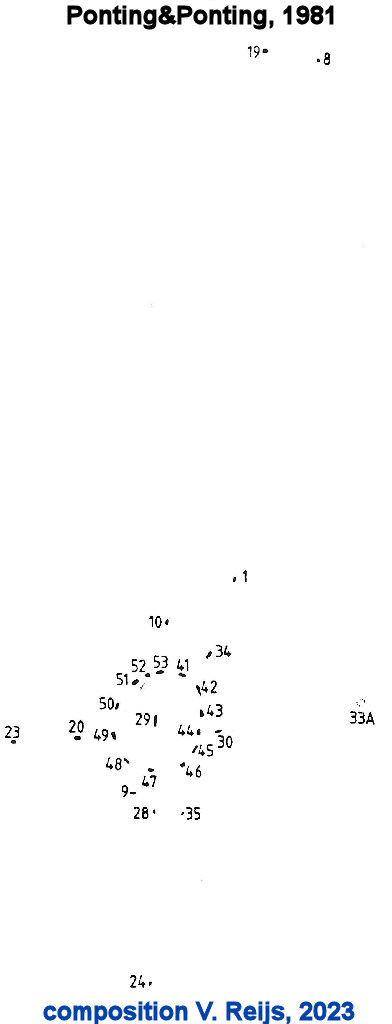 |
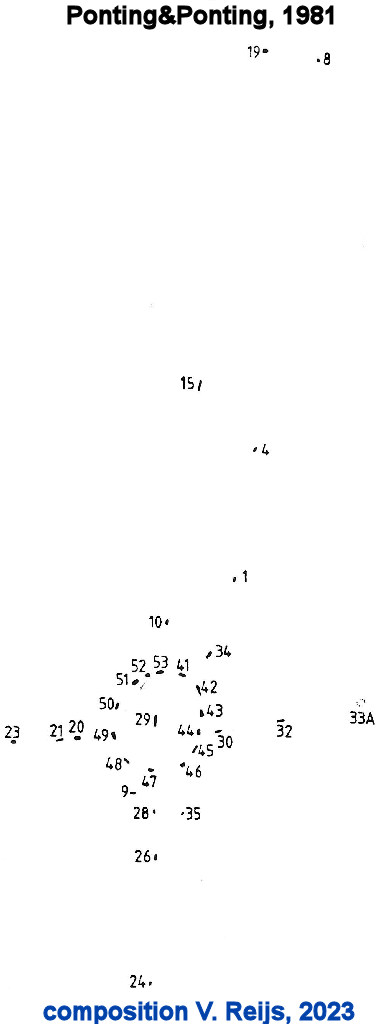 |
 |
| Stones
are thin stakes |
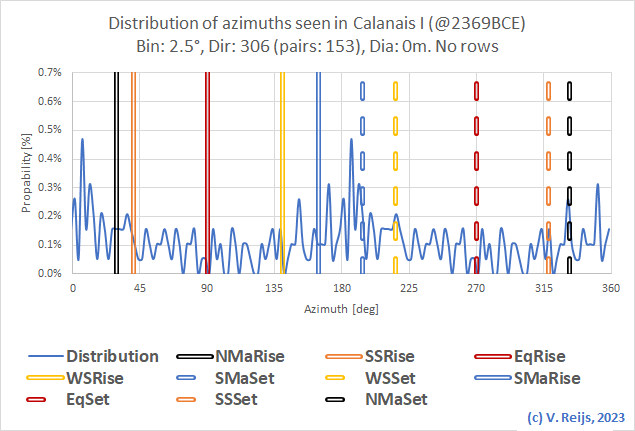 |
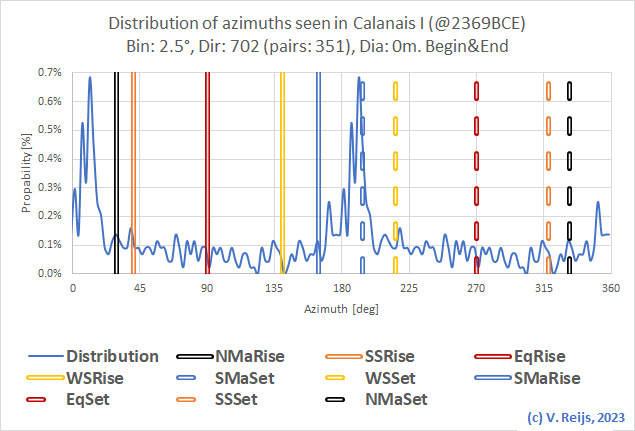 |
 |
 |
| Stones
have 0.3m radius |
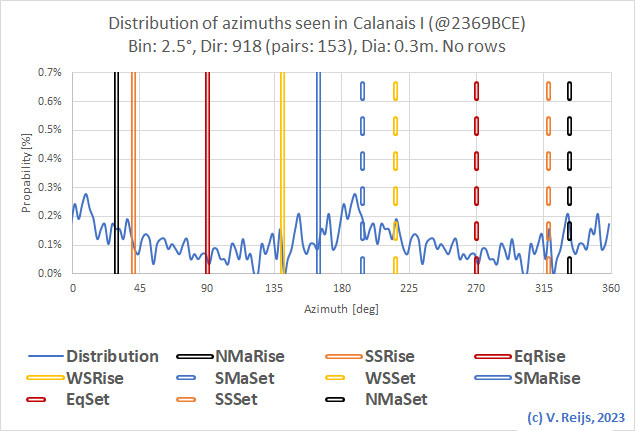 |
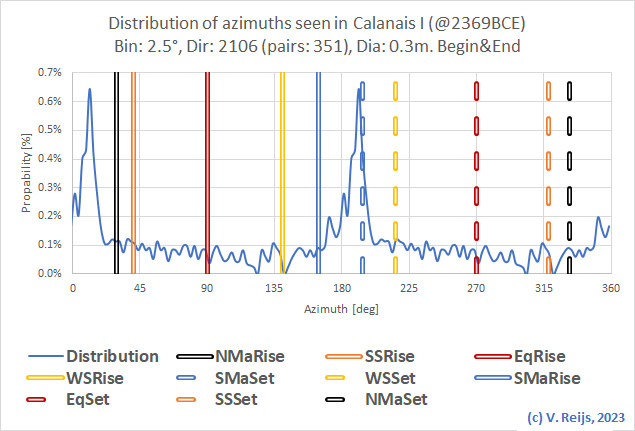 |
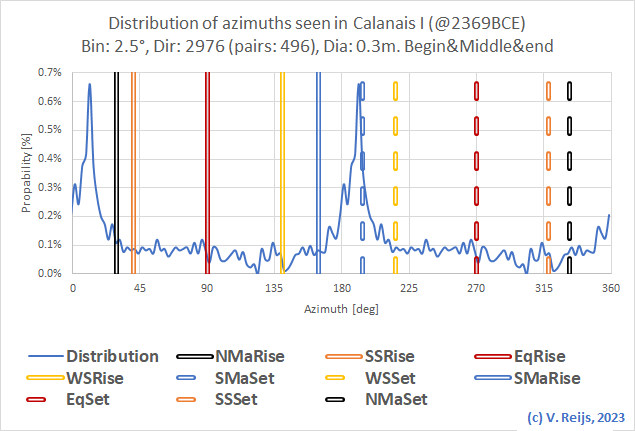 |
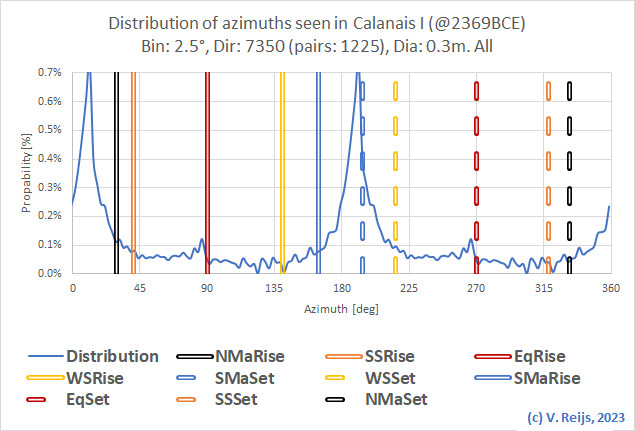 |
An overview of some of the directions seen in literature
concerning Calanais I
related to celestial objects. The literature used mostly 1550BCE
as reference epoch, which is somewhat later than the 2369BCE as
chosen by the author of this website.
In the below section we compare results of 3D scenery and
literature for epoch 1550BCE.
Cnoc Dubh is west of Calanais. In Irish Dubh is
also related to west/dead/otherworld...
Lunar/solar directions seen by Curtis&Curtis (Views A to F),
Curtis (Views G, H, J) and Curtis&Maclean and Curtis (View I)
and Stellarium in Calanais I (right click
to see enlarged image in another browser window):
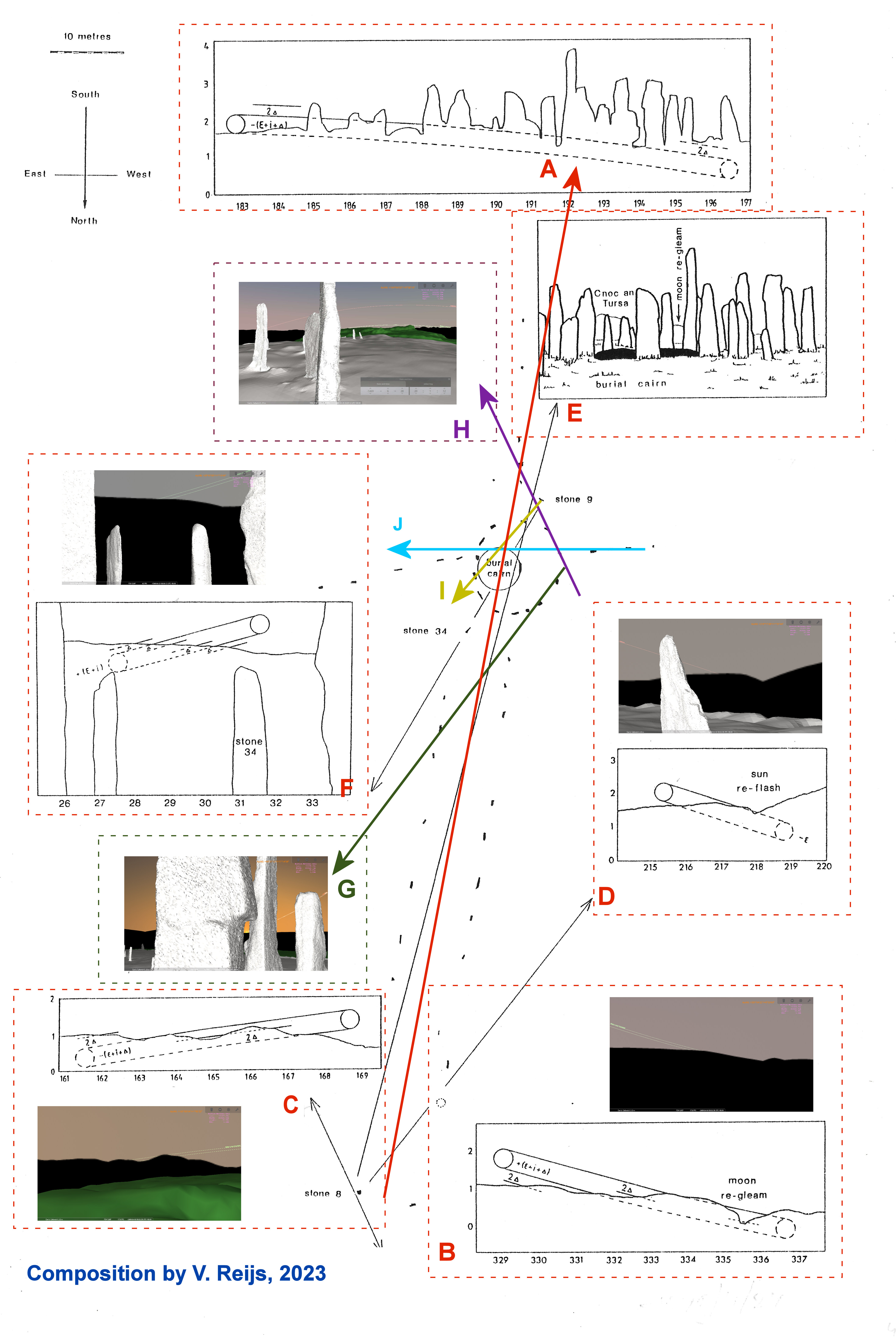

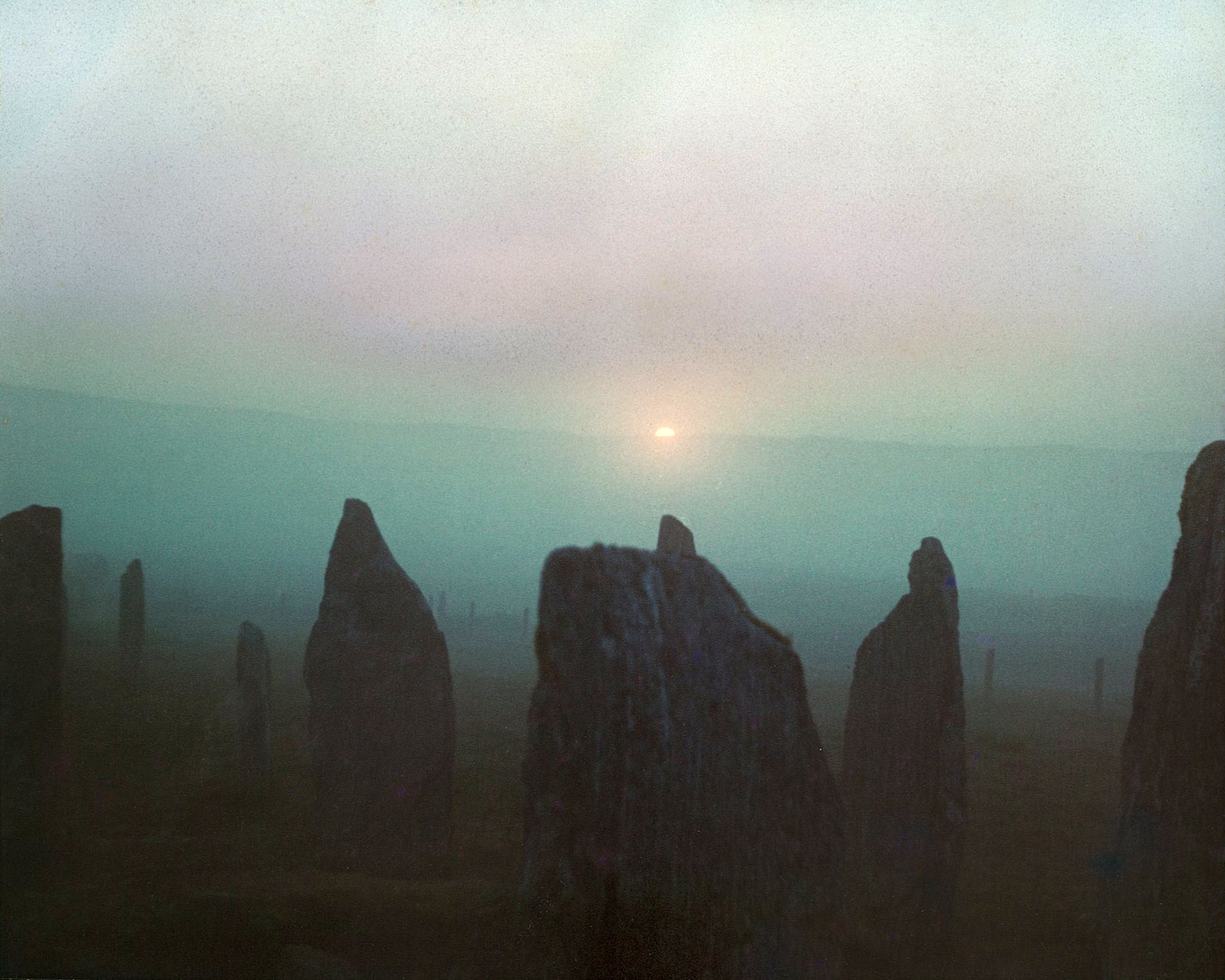 |
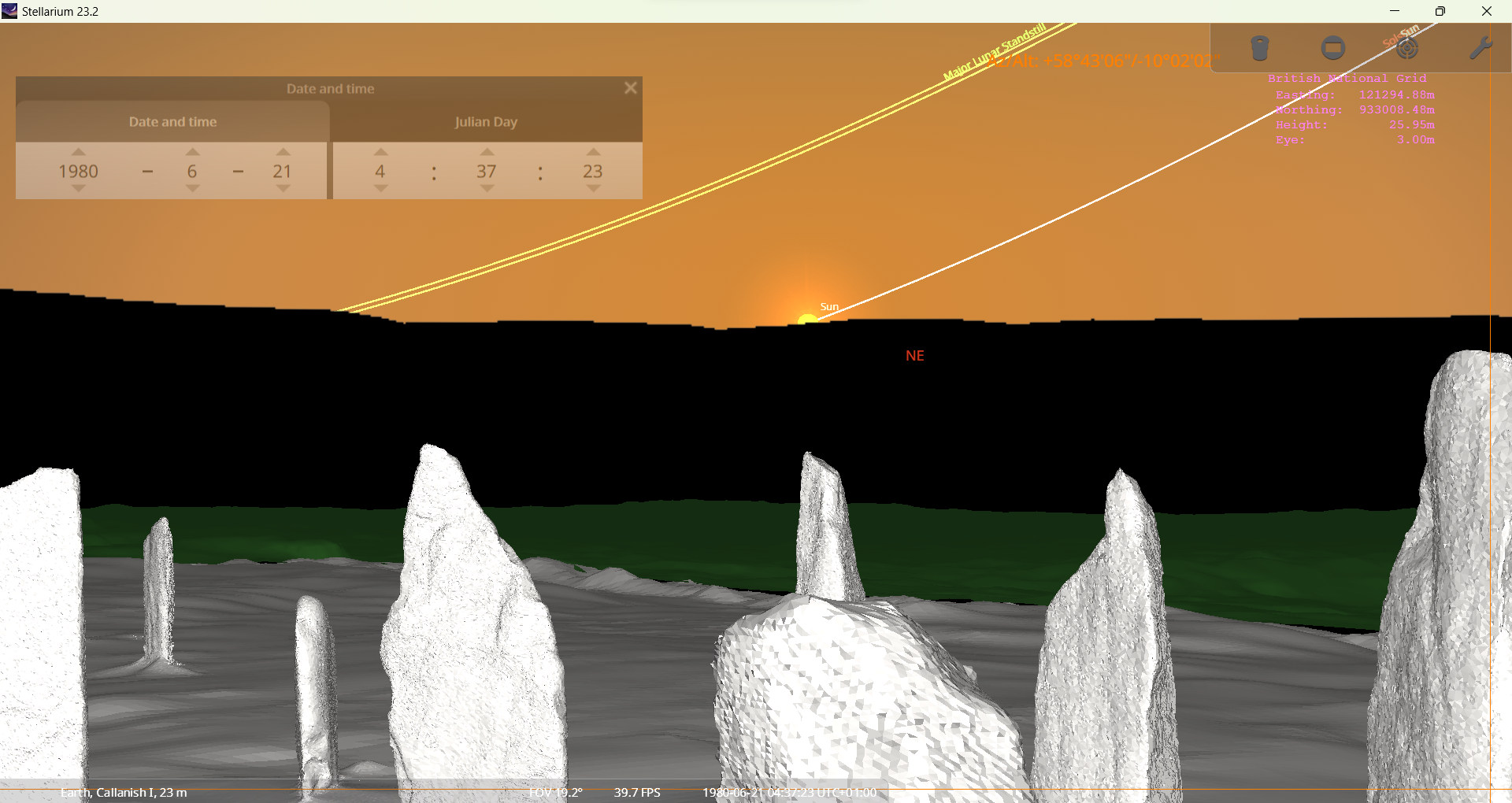 |
 |
| Photograph by
Maclean (around June 21st, 1980 [pers. com., 2023]) |
Summer solstice 1980CE Stellarium view (June 21st, 1980) |
Summer solstice 1550BCE Stellarium view (July 8th, 1550BCE) |
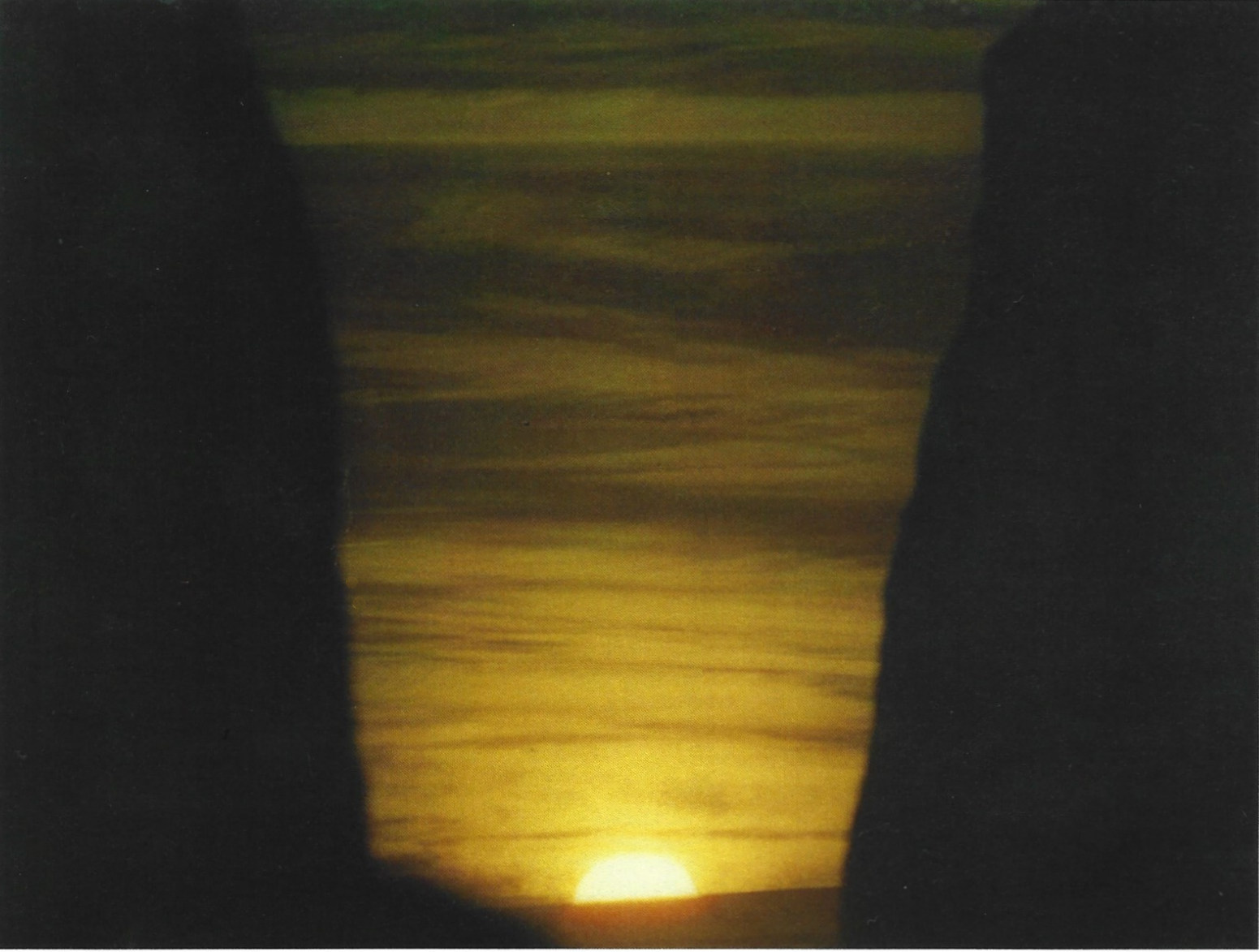 |
 |
| Photograph by Curtis
(2014, p. 89) |
Equinox Stellarium view (Sept 23th, 2023CE) |
Compared to 1550BCE,
2369BCE's northern events will be on average some 0.3deg more
northern and 2369BCE's southern events will be on average some
0.3degrees more southern. Equinox stays the same.
Looking at the intra stone directions within Calanais
I, there
looks to be for certainly a direction that is close to the
southern major standstill (SMa) set. Less likely (less
significant) are the northern major standstill (NMa) set. Within
the circle some slight solar directions could be seen (solstices
[WS rise&set and SS rise] and equinox [E]), but these are not
very significant. These events are coloured purple in below table.
Looking at the celestial
directions referenced in literature for the epoch 1550BCE
and at the celestial
directions compared to 3D scenery for the epoch 2369BCE, we
get:
| |
View |
|||||||||
| A |
B |
C |
D |
E |
F |
G |
H |
I |
J |
|
| Involved stones |
8-33A:29& 41:53&skyline |
8-skyline |
8-skyline |
8-18A?& skyline |
8-47&29 |
8-34 |
51&52 |
49&48&9&27 | 9-47&43 | 23-22&21&20 |
| Solar event |
WS
|
SS
|
SS
|
E |
||||||
| Lunar event |
SMa | NMa |
SMa |
SMa |
SMa |
SMa |
||||
| R(ise)/T(ransit)/S(et) |
RTS |
S |
R |
S |
S |
R |
R |
R |
R |
R |
| Close to skyline feature |
X |
X |
X |
X |
||||||
| Skimming |
X |
|||||||||
| Reappearing |
X |
X |
X |
|||||||
| Regleaming |
X |
|||||||||
| Window |
X |
|||||||||
| Between stones |
X |
X |
||||||||
| Above stone |
X |
|||||||||
| Touching stone |
X |
|||||||||
| Precise for 1550BCE |
X |
X |
X |
|||||||
| Precise for 2369BCE |
X |
X |
||||||||
| Early warnings |
X |
X |
||||||||
| Quite broad |
X |
X |
X |
X |
X |
X |
X |
|||
Ashmore, Patrick J.: Calanais: Survey and excavation, 1979-88.
2013. https://www.historicenvironment.scot/archives-and-research/publications/publication/?publicationId=b6aee5fd-5980-4872-a2e0-a63c00cc7b68
Curtis, Ron and Margaret R. Curtis: Callanish: Stones, Moon &
sacred landscape. (1994).
Curtis, Margaret R. and Malcolm Maclean: Midsummer sunrise
alignment and symmetrical triple stone setting. In. Margaret R.
Curtis (ed): Celebrations in stone of the Sun's annual cycle at
Callanish. 2014. pp. 92
Ponting, Margaret R. and Gerald Ponting: Decoding the Callanish
complex: Some initial results. In: BAR British Series. 88 1981.